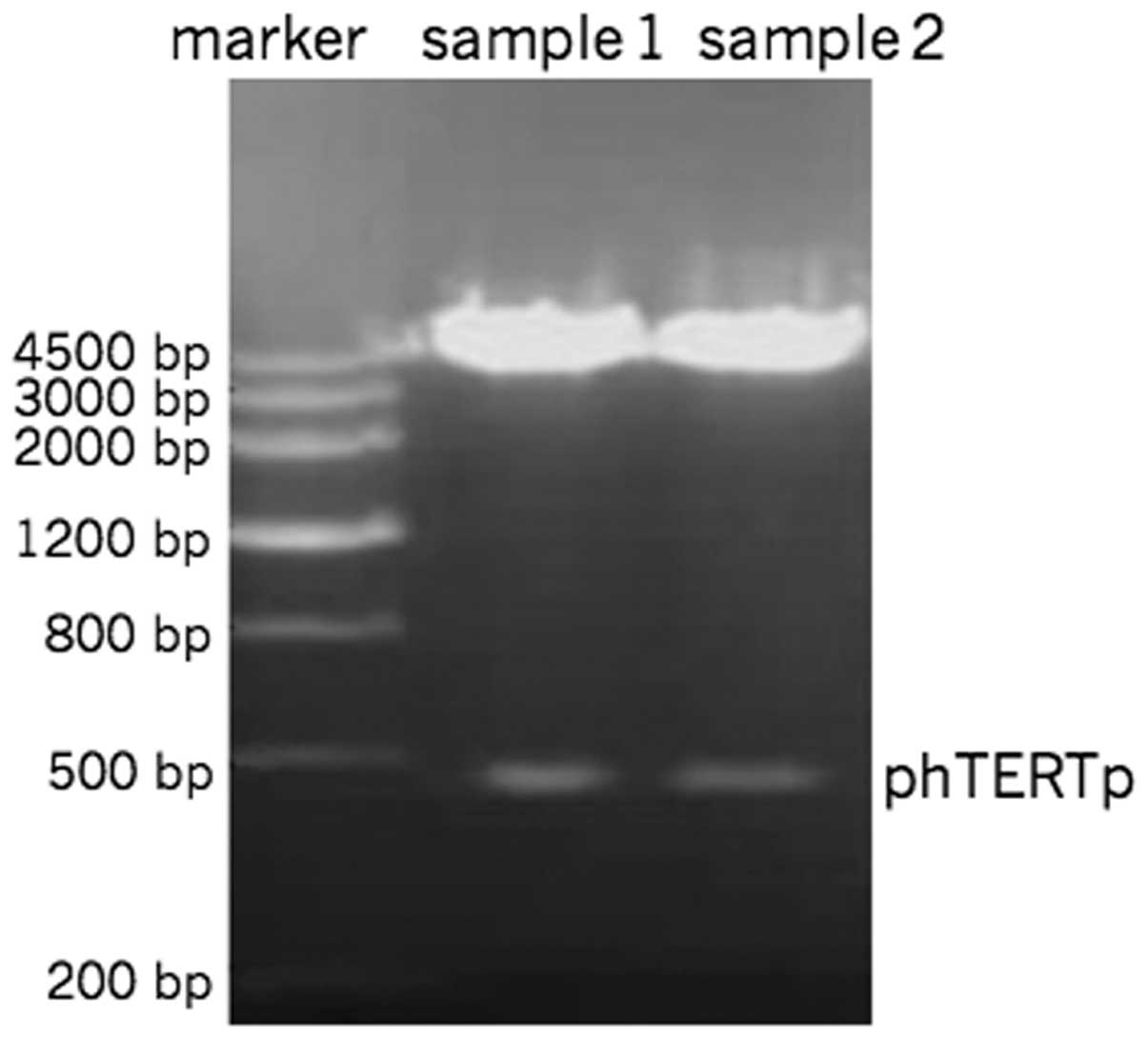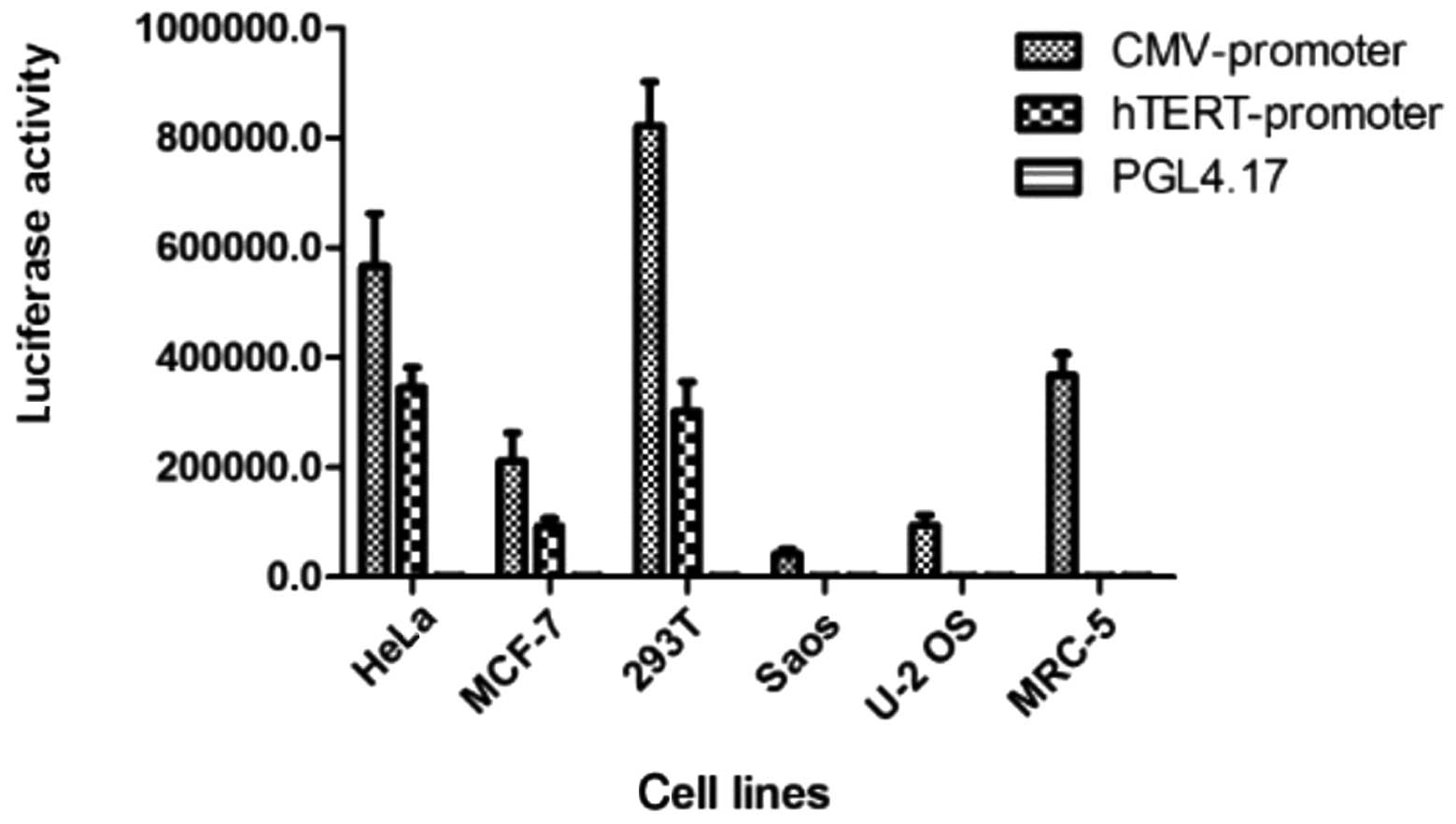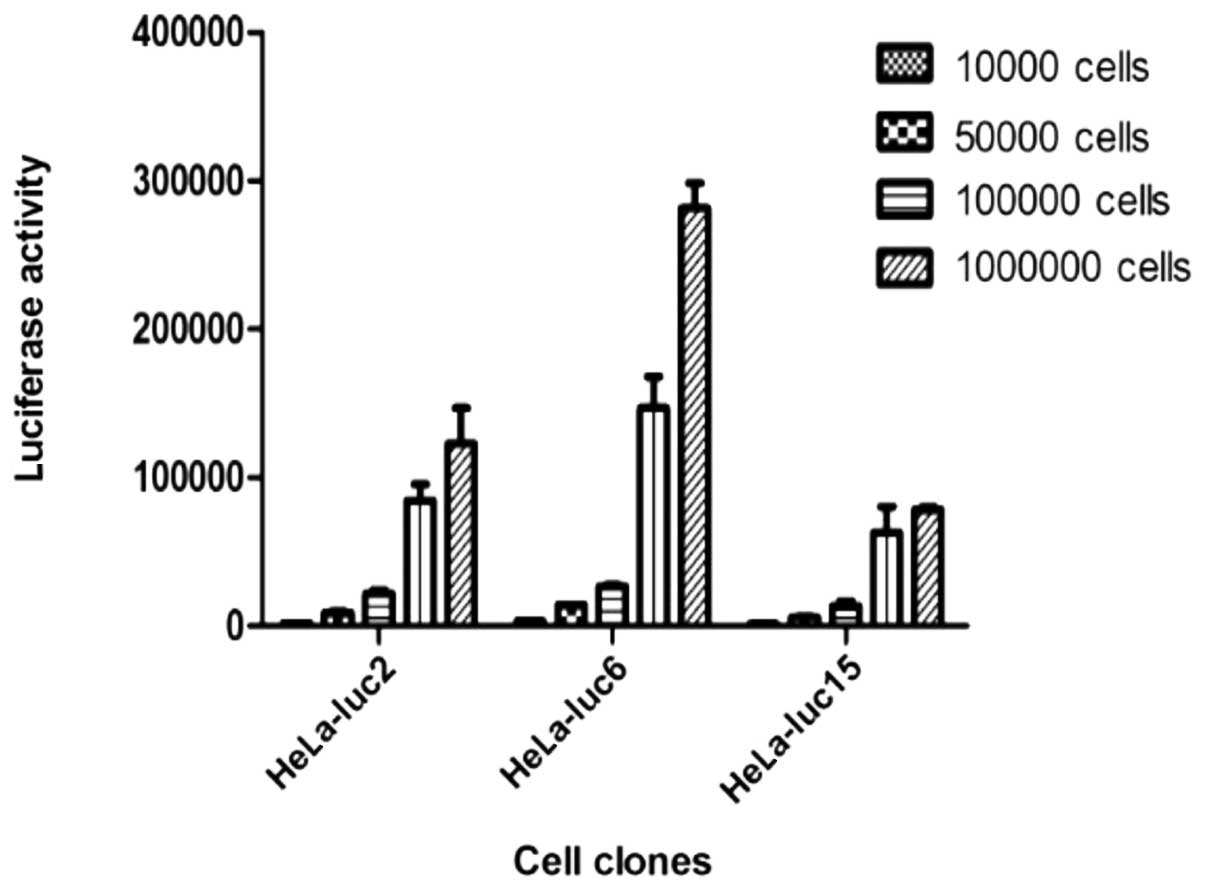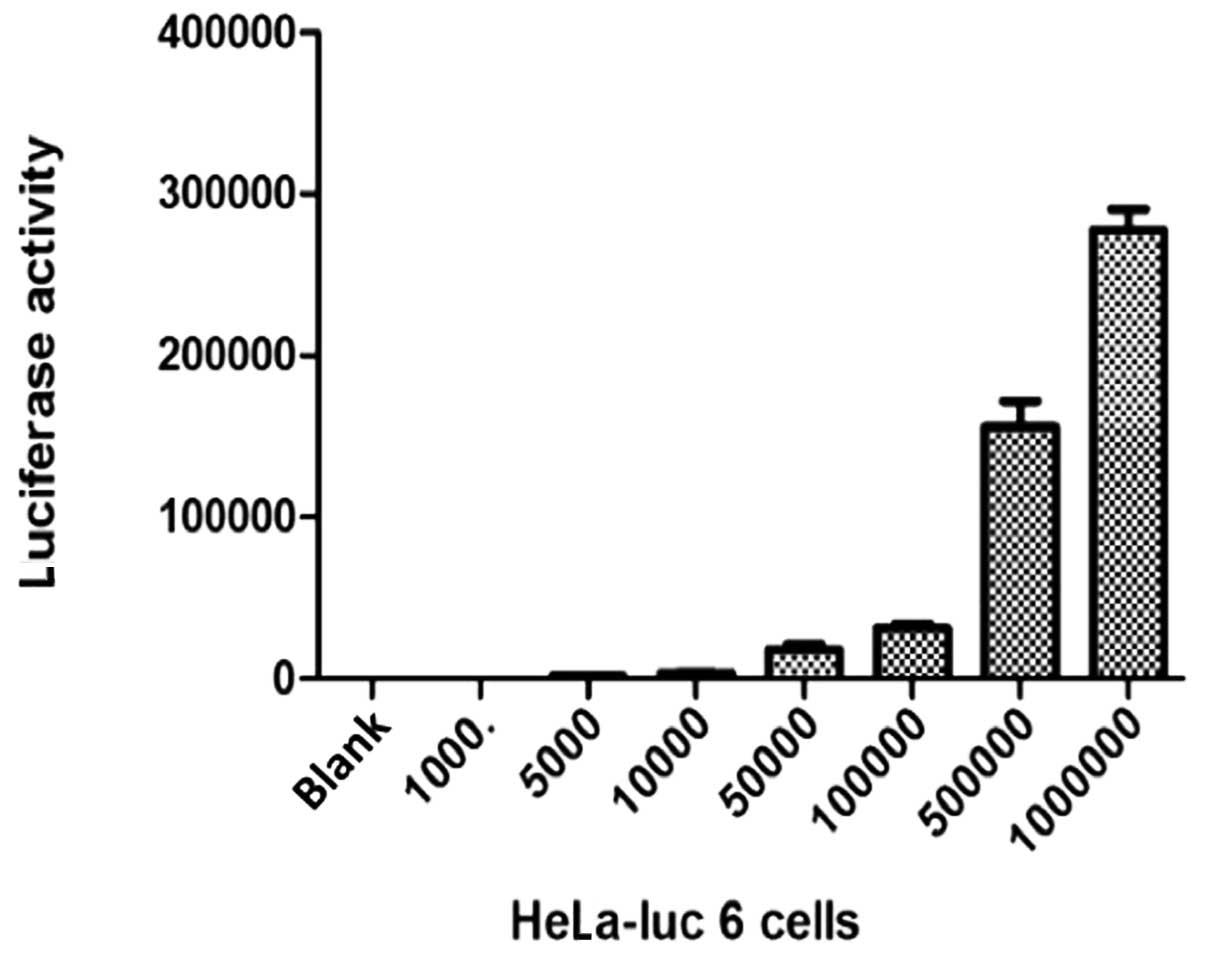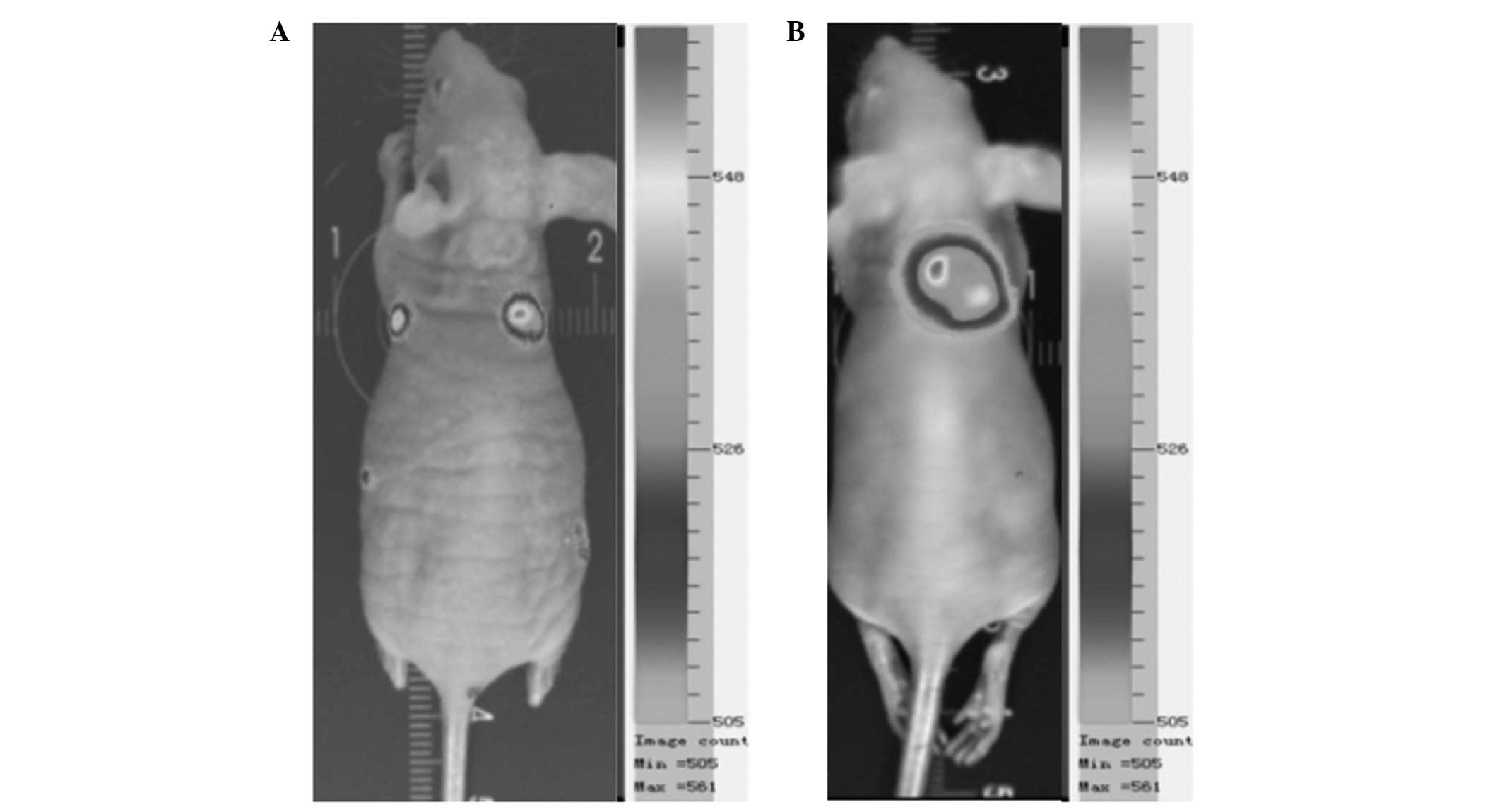Construction of a tumor‑specific bioluminescent eukaryotic expression vector and analysis of its expression in vitro and in vivo
- Authors:
- Published online on: May 8, 2013 https://doi.org/10.3892/ol.2013.1343
- Pages: 207-211
Metrics: Total
Views: 0 (Spandidos Publications: | PMC Statistics: )
Total PDF Downloads: 0 (Spandidos Publications: | PMC Statistics: )
Abstract
The aims of this study were to construct a tumor‑specific bioluminescent eukaryotic vector driven by the hTERT gene promoter and to establish a stable HeLa cell line expressing a modified firefly luciferase gene. PhTERTp‑luc and pGL4.17 (luc2/Neo) were digested with SacI and HindIII, respectively, and the recombinant vector phTERTp‑luc‑neo was generated by ligating the desired fragments. The expression of phTERTp‑luc‑neo was tested in a non‑transformed cell line (MRC‑5), and in telomerase‑positive (HeLa, MCF‑7 and 293T) and ‑negative (U2OS and SaOS) transformed cell lines using a luciferase assay. Results showed that the recombinant vector had higher luciferase activity in telomerase‑positive transformed cell lines. PhTERTp‑luc‑neo was transfected into a HeLa cell line, selected by G418 and bioluminescence imaging, and a cell clone HeLa‑luc that constitutively expressed both neomycin and luciferase was obtained. We also conducted experiments in animals to observe luciferase activity in vivo using stable cell lines that were subcutaneously implanted into BALB/c nude mice and tumor growth was monitored by bioluminescence imaging. The HeLa‑luc cell line retained its oncogenicity and tumors were detected on the fifth day following implantation by bioluminescence imaging. This study has formed a basis for the study of the expression and regulation of hTERT and early tumor detection. It also provides a convenient, sensitive and reliable platform for cervical cancer research.



